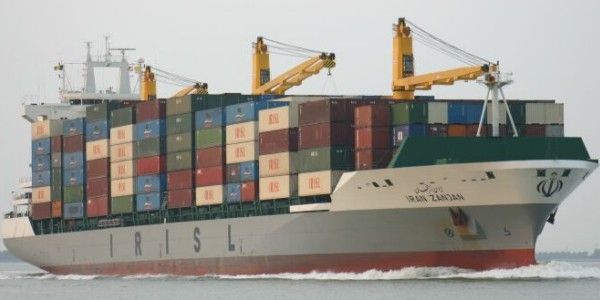Paul Bugden, Bugden + Co., London
Ref: Fulton Shipping Inc of Panama v Globalia Business Travel S.A.U. [2014] EWHC 1547 (Comm) Popplewell J
This case raised a short but important point as to whether a shipowner claiming damages for charterers’ repudiation of a time charter must give credit for the capital value of having sold the vessel upon repudiation for a greater sum than the value of the vessel at the (later) contractual date for redelivery under the charter.
In deciding the issue the judge found it necessary to embark on a detailed consideration of the authorities on collateral benefits and mitigation in damages and helpfully summarised the relevant principles. His observations on causation are however of much wider application and interest and extend far beyond the strict ambit of the issues raised by the case.
The background facts were that in August 2007 the Owners had accepted the Charterers’ anticipatory repudiatory breach of the time charter as terminating the charterparty. In October 2007 the Owners sold the Vessel for US$23,765,000. However the subsequent collapse of Lehman Brothers in September 2008 and the World financial crisis meant that the value of the Vessel in November 2009, when she would have been redelivered if the time charter had continued in the ordinary way, was only US$7,000,000.
The Owners advanced their claim for damages calculated by reference to the net loss of profits which they alleged that they would have earned during the additional two year extension. Such profits were set out in a detailed schedule identifying the revenue which would have been earned under the charterparty, and giving credit for the costs and expenses which would have been incurred in operating the Vessel in providing the charterparty service for those two years, but which had been saved as a result of the sale of the Vessel.
The Charterers argued that the Owners were bound to bring into account and give credit for the difference between the amount for which the Vessel had been sold in October 2007 (US$23,765,000) and her value in November 2009 (US$7,000,000). The Owners argued that the difference in value was legally irrelevant and did not fall to be taken into account. The arbitrator decided this issue in favour of the Charterers. The judge on appeal decided it in favour of the owners.
As the judge observed the search for a single general rule which determines when a wrongdoer obtains credit for a benefit received following his breach of contract or duty is elusive but nevertheless the judge identified a number of principles from the authorities;
(1) In order for a benefit to be taken into account in reducing the loss recoverable by the innocent party for a breach of contract, it is generally speaking a necessary condition that the benefit is caused by the breach.
(2) The causation test involves taking into account all the circumstances, including the nature and effects of the breach and the nature of the benefit and loss, the manner in which they occurred and any pre-existing, intervening or collateral factors which played a part in their occurrence.
(3) The test is whether the breach has caused the benefit; it is not sufficient if the breach has merely provided the occasion or context for the innocent party to obtain the benefit, or merely triggered his doing so. Nor is it sufficient merely that the benefit would not have been obtained but for the breach.
(4) In this respect it should make no difference whether the question is approached as one of mitigation of loss, or measure of damage; although they are logically distinct approaches, the factual and legal inquiry and conclusion should be the same.
(5) The fact that a mitigating step, by way of action or inaction, may be a reasonable and sensible business decision with a view to reducing the impact of the breach, does not of itself render it one which is sufficiently caused by the breach. A step taken by the innocent party which is a reasonable response to the breach and designed to reduce losses caused thereby may be triggered by a breach but not legally caused by the breach.
(6) Whilst a mitigation analysis requires a sufficient causal connection between the breach and the mitigating step, it is not sufficient merely to show in two stages that there is (a) a causative nexus between breach and mitigating step and (b) a causative nexus between mitigating step and benefit. The inquiry is also for a direct causative connection between breach and benefit, in cases approached by a mitigation analysis no less than in cases adopting a measure of loss approach. Accordingly, benefits flowing from a step taken in reasonable mitigation of loss are to be taken into account only if and to the extent that they are caused by the breach.
(7) Where, and to the extent that, the benefit arises from a transaction of a kind which the innocent party would have been able to undertake for his own account irrespective of the breach, that is suggestive that the breach is not sufficiently causative of the benefit.
(8) There is no requirement that the benefit must be of the same kind as the loss being claimed or mitigated.
(9) Subject to these principles, whether a benefit is caused by a breach is a question of fact and degree which must be answered by considering all the relevant circumstances in order to form a commonsense overall judgment on the sufficiency of the causal nexus between breach and benefit.
(10) Although causation between breach and benefit is generally a necessary requirement, it is not always sufficient. Considerations of justice, fairness and public policy have a role to play and may preclude a defendant from reducing his liability by reference to some types of benefits or in some circumstances even where the causation test is satisfied.
(11) In particular, benefits do not fall to be taken into account, even where caused by the breach, where it would be contrary to fairness and justice for the defendant wrongdoer to be allowed to appropriate them for his benefit because they are the fruits of something the innocent party has done or acquired for his own benefit.
On the facts found by the arbitrator the judge held the application of these principles did not require the Owners to give credit for any benefit in realising the capital value of the Vessel in October 2007, by reference to its capital value in November 2009, because it was not a benefit which was legally caused by the breach.
The Vessel was an asset purchased by the Owners in 2005. It had a capital value, which could be measured by reference to the amount for which the Owners could sell it at any particular time. Its value could be expected to fluctuate according to market conditions. When the Owners sold it in October 2007, it was, on the tribunal’s findings, worth $23,765,000.
The fact that it would have been worth only $7 million two years later was a result of the fall in the market flowing from the financial crisis. The difference in the value of the Vessel was not caused by the Charterers’ breach of the charter; it was caused by the fall in the market which occurred irrespective of such breach. The effect of the fall in the market on the Owners was also not caused by the Charterers’ breach. It was caused by the Owners’ decision to sell the Vessel. At the moment of breach, the Owners had a choice whether or not to sell the Vessel, as they had at any stage over the unexpired period of the charterparty. If and when they chose to sell, market fluctuations in the Vessel’s value thereafter would no longer affect them, for good or ill.
If the market subsequently rose, the decision to sell might with hindsight seem a poor one; if the market fell it would prove to be a wise one. That was a matter for the Owners’ commercial judgment and involved a commercial risk taken for their own account. That is none the less so because it was reasonable for them to sell when faced with the Charterers’ breach. The decision to sell was legally independent of the breach, so far as concerns movements in the capital value of the Vessel. The breach merely provided the context or occasion for the Owners to realise the capital value of the Vessel. It was the trigger not the cause.
It was the Owners’ decision to unlock the capital value of the Vessel, not the breach, which gave rise to the relevant benefit. The Owners were not obliged to sell the Vessel, as a matter of fact or law. The tribunal did not find that a failure to do so would have been a failure reasonably to mitigate loss. There can be no question of the Owners being obliged to realise the capital value of the Vessel by selling it on breach, however reasonable such a course was from a business point of view.
The causation question was not concluded by the tribunal’s finding that the sale was in reasonable mitigation of loss. The loss in question which was mitigated was the Owners’ net loss of income from the charterparty. The sale of the Vessel mitigated this loss because it reduced the continuing costs of operating or laying up the Vessel.
To the extent that the benefits flowing from the sale comprised such cost savings, there was no difficulty in treating the causal nexus between breach and benefit as established through the mitigating step of selling the Vessel. But insofar as the sale gave rise to a capital benefit, it was not caused by the breach, but by the independent decision of the Owners to realise the capital value of their asset. Although that was a benefit which flowed from the mitigating step of selling the Vessel, it does not satisfy the principle that benefits are only to be taken into account to the extent that they are caused by the breach.
A further indication that the capital benefit to the Owners derived from selling the Vessel in 2007 rather than 2009 was not legally caused by the breach is to be found in the fact that a sale of the Vessel was the kind of transaction which it was open to the Owners to enter into irrespective of the Charterers’ breach of charterparty. Whilst the charter was on foot, the Owners might have sold the Vessel subject to charter, provided that they did so on terms which required the new owner to perform the charterparty so that they were not putting it out of their power to perform. Sale of the Vessel was a transaction which could, in principle, have occurred irrespective of the breach.
The capital value of the Vessel was a benefit which the Owners had obtained for their own account prior to the breach when they bought the Vessel in 2005. They invested their money (or that which they borrowed) in an asset, taking upon themselves the risk of fluctuations in its capital value which would inevitably be affected by the sale and purchase market. They took the risk of having invested in the Vessel, and of the financial consequences of a decision as to whether or when to sell her. To allow the Charterers to take the benefit of their decision to sell at what turned out to be an opportune moment in market conditions would be to allow the Charterers to appropriate the fruits of the Owners’ investment in the Vessel in a way which would be unfair and unjust.

